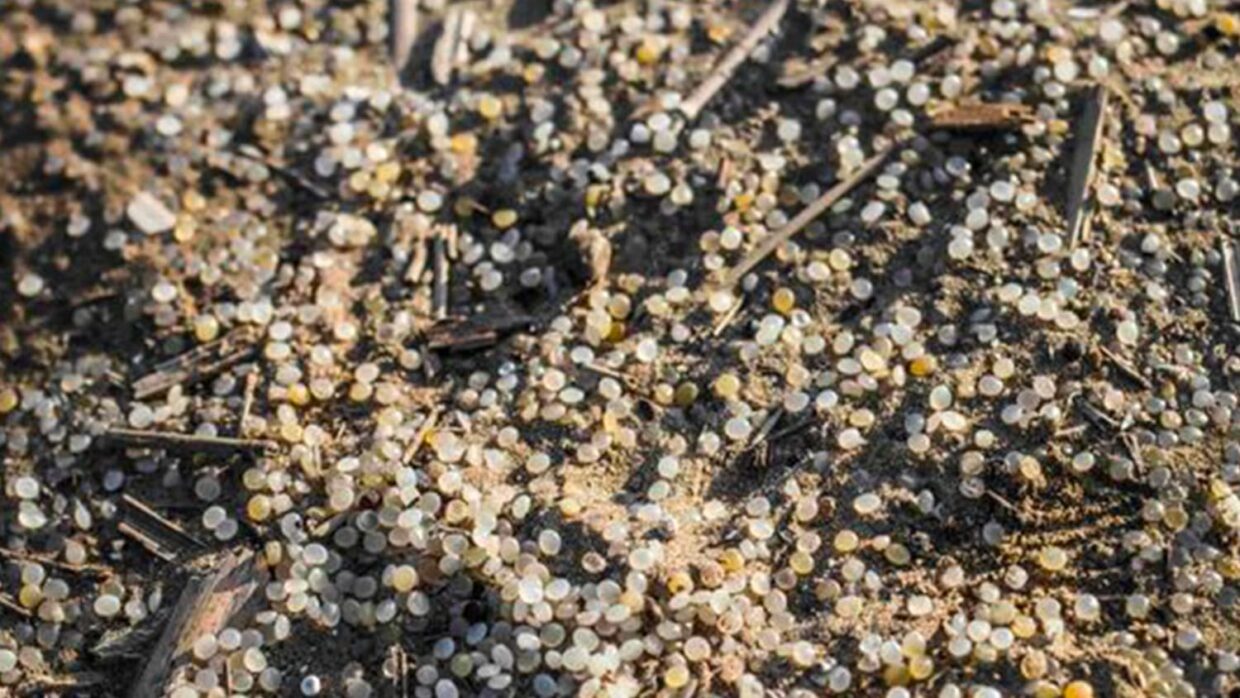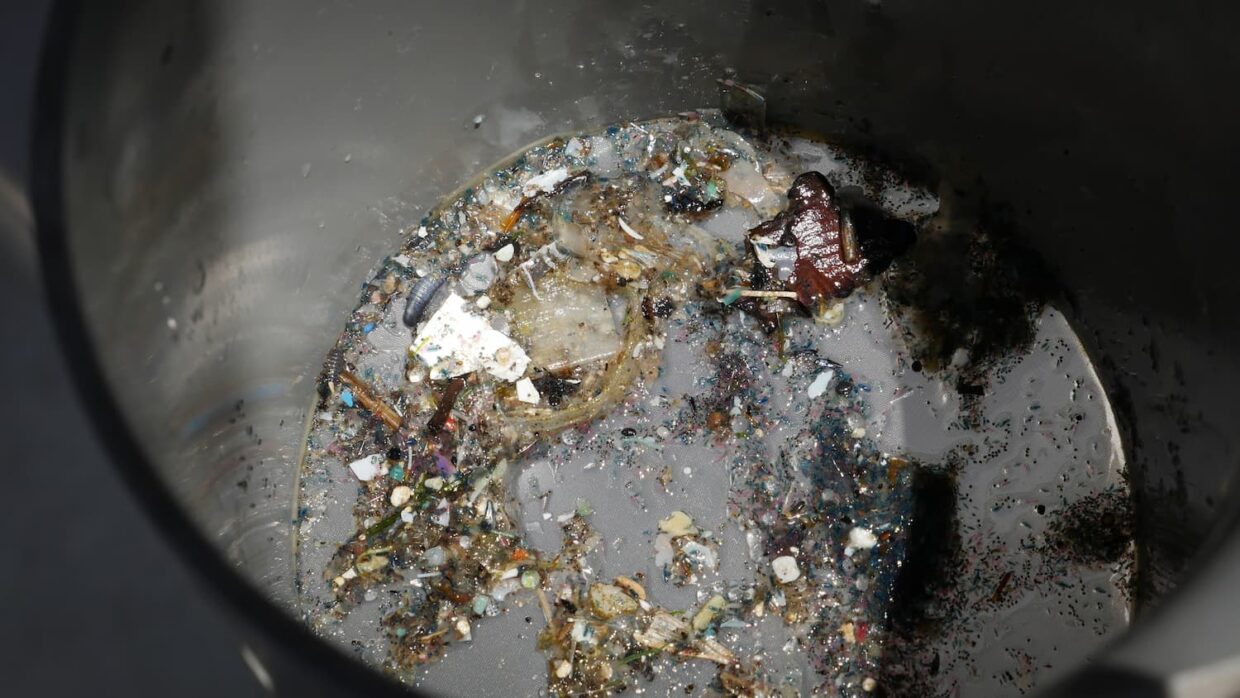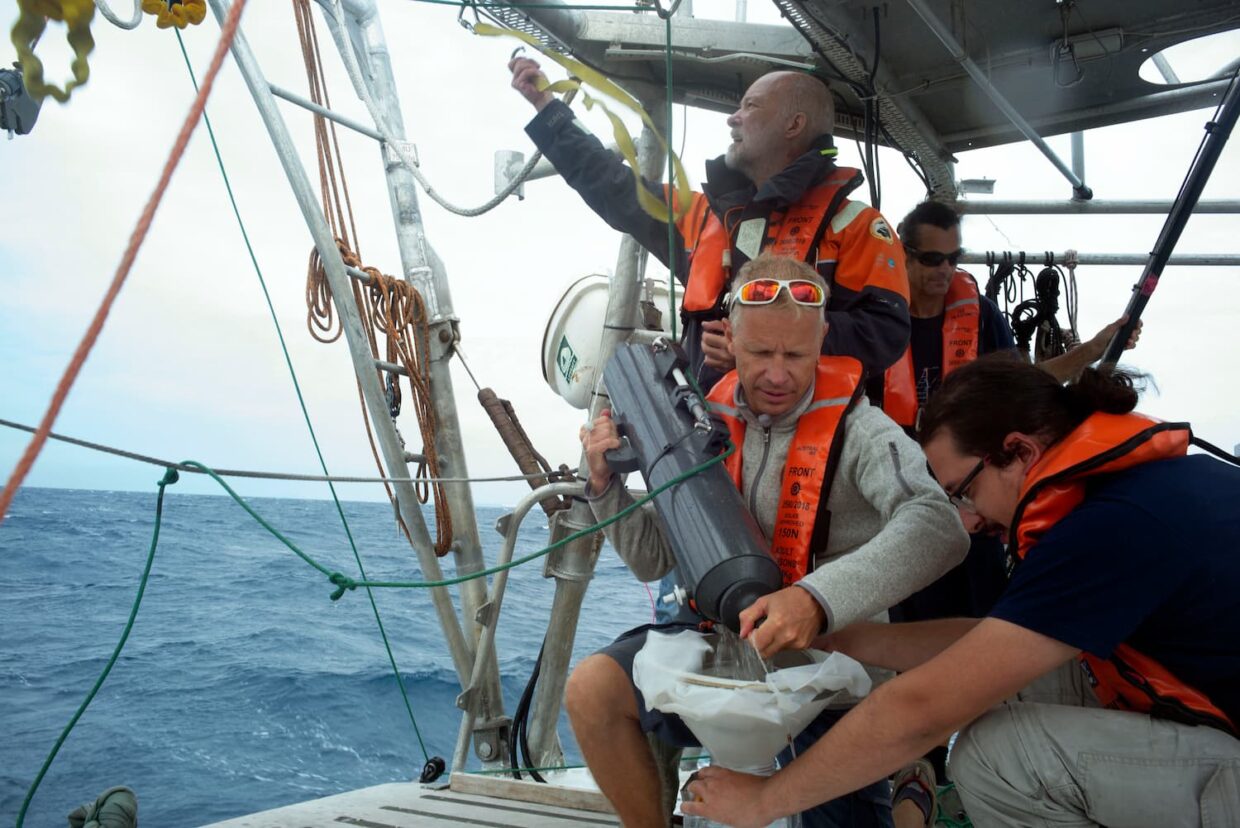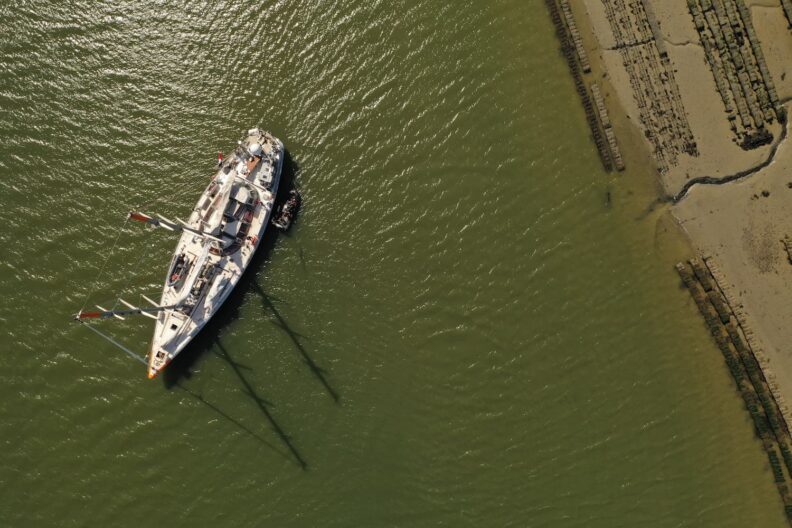Environmental pollution caused by microplastics: the example of mermaid tears
Aquatic spaces are subject to different environmental pressures coming from human activities such as agriculture, industry and domestic waste. The massive proliferation of micro-algae and bacteria in the aquatic environment, consequences of these anthropogenic pressures, has an impact on coastal ecosystems and local populations. With a better understanding of existing pollution and its origins, thanks to discussions with concerned parties such as the Tara Europa Lab, we can identify avenues for improvement.

How does plastic impact the environment?
According to ADEME, the Ecological Transition Agency, plastic is the third most-produced material in the world (after cement and steel), representing half a billion tonnes,
Overall production of plastic has experienced an exponential increase since the 1950s. It doubled between 2000 and 2019, going from 234 million tons to 460 million in 2019. This production is expected to at least triple by 2060, if no change is made.
The projections for increased plastic production vary significantly between the countries belonging to the Organization for Economic Cooperation and Development (OECD) and developing countries. However, it must be noted that the former will definitely remain the main contributors to global plastic pollution. Thus, each inhabitant of OECD countries will consume 238 kg of plastics in 2060, compared to 77 kg for inhabitants of non-OECD countries.
During production
This increase is extremely problematic, because it is now proven that these materials impact living things at ALL stages, from their production to their use and elimination. The impact starts with their production: 99% of plastic is produced from fossil resources extracted from the subsoil, and contributes to 3 to 4% of global greenhouse gas emissions. As much as the entire aviation sector! And with the planned increase in production, this figure will rise to 15% of emissions by 2050.
During transport
Once extracted, plastic travels across the Earth in the form of pellets. Here again, the impacts are immense. Containers containing these pellets regularly fall off ships and end up on beaches where we call them «mermaid tears». France experienced an episode of this kind in January 2023, when the beaches of Finistère found themselves covered with plastic microbeads.
When in use
Afterwards comes the phase we face in our daily lives — using plastics. They are in fact a large family of materials which today include at least 30,000 distinct substances. So, there are more than 30,000 different impacts, most of which are still unknown. However, we already know the effects of several of them: endocrine, developmental or even reproductive disruptions. Regulations limiting our exposure to these toxic materials are coming as we manage to prove their negative impacts on our health.
Several plastics are directly produced on a microscopic scale and are not designed to be collected, for example in cosmetics. As for macro-plastics, exposed to rain, friction or simple wear and tear over time, they release micro or nano particles. Multiplied by the millions of tons of plastics currently used, this is a continuous flow of plastics leaking into the environment.
Plastic waste
Finally comes the impact we are most aware of: plastic waste. We use plastics in such great quantities that even if only a tiny portion were collected, this would represent a gigantic amount. For example, if only 1% of plastic bottles sold in France ended up in nature, that would still represent 80 million bottles. And today’s collection and sorting systems are far from achieving this performance. In fact, we only collect a little more than one in two, and the bottle is by far the most-collected object. This waste ends up in the environment and impacts biodiversity at all scales.
Macro-plastics can be swallowed by wildlife and cause them to suffocate. Micro and nano-plastics contaminate soil and water, penetrating all living beings for which they can be highly toxic.
What are the impacts of plastic pollution in the Ocean?
The Ocean is the final receptacle of this pollution and no longer spares any area of the globe. Its most visible consequences — birds and marine fauna dying from suffocation by plastic macro-waste—should alone encourage us to act.
Unfortunately, the damage caused to biodiversity by plastics is not limited to this. The fragmenting of macro-waste into microplastics causes many other consequences:
- penetration of toxic substances into the food chain
- substitution for natural foods
- disruption of organisms’ development
- transport of chemical, bacteriological and viral contaminants
Finally, by contributing significantly to global warming, plastic contributes to the associated impacts: increase in global water temperature, submergence of coastal ecosystems, etc.
Microplastics: what are we talking about?
Smaller than grains of rice (0.2 to 5 mm in diameter), microplastics are omnipresent in the Ocean, with billions of them floating on the surface! They are a very heterogeneous group, varying in size, shape, color, chemical composition, density and other characteristics.
These fragments are very stable and can sometimes persist for up to 1,000 years in the marine environment. There are two main categories of microplastics: primary and secondary microplastics:
- Primary microplastics are microscopic plastics released directly into the environment in the form of small particles. They can, for example, be deliberately added to cosmetic products, derive from washing clothes (synthetic polyester fibers, etc.), or even result from plastic granules going astray.
- Secondary microplastics result from the fragmentation of macroplastics (bottles, bags, food packaging, etc.) in nature under the effect of waves, sun and salt.

What are mermaid tears?
Despite their pretty name, mermaid tears don’t come from a fairy tale. They correspond to one form in which plastic is produced and transported by petrochemical companies. They are delivered to plastic manufacturers, to be transformed into the final object or part of an object. It is therefore a primary microplastic.
During the different stages of transport and handling, losses can occur. Those which regularly pollute the Breton coasts probably come from shipping containers lost at sea. But losses can also occur during road transport or at storage and processing sites.
Marine pollution by microplastics
These mermaid tears are one of the main sources of Ocean pollution by primary micro-plastics. The Agec law – Anti-Waste for a Circular Economy – adopted by Parliament on February 10, 2020 provides prevention measures for leaks of these industrial plastic granules. Unfortunately, the implementing decree (taken by the government on April 16, 2021) introduced so many exceptions to these measures (for example, pellets less than 1 cm. in diameter, sites accommodating a minimum of 5 tonnes, absence of specific transport measures, self-checks, etc.) that its scope is greatly reduced.
Plastic pollution is now omnipresent in the Ocean, mixing with micro-organisms and interacting with biodiversity. Clean-up is therefore not only impossible but presents an ecological risk. Pollution has become inseparable from marine life, and “cleaning the Ocean of plastics” would mean emptying it of the organisms living there.
There is an urgent need to consider these industrial plastic granules for what they are: dangerous for the environment and health. Their manufacture, transport, storage and processing must be accompanied by safety and control measures implemented by independent agents.
Despite significant regulatory texts and efforts to reduce leaks of microplastics into the environment, accidents are inevitable. We can never totally avoid the loss of some containers at sea, some road accidents and storage errors. Since plastic production has multiplied by 300 since 1950, and is expected to increase by a factor of 3 by 2060, accidents can, statistically, only multiply, despite all the efforts made.
Focus on the Tara Microplastics expedition (2019)
Marine biologists, eco-toxicologists, oceanographers, modelers, chemists and physicists made up the interdisciplinary team engaged in this vast European investigation. Our objectives: identify sources of pollution, understand the fragmentation of microplastics in rivers, predict their dispersion into the Ocean, understand their impacts on marine biodiversity and their effects on the food chain.
Sailors and scientists aboard Tara brought back 2,700 samples located between land and sea. Along the rivers Thames, Elbe, Rhine, Seine, Ebro, Rhône, Tiber, Garonne, Loire —samples and data were collected off estuaries, at the rivers’ mouths, downstream and upstream of the first big city with a large population located on each river.
The first observations during the 2019 Microplastics mission confirmed the extent of plastic pollution with the presence of microplastics in all samples, but also the observation of plastic fragmentation much further upstream than we expected. Numerous analyses are underway and the first results will appear soon.
Research on plastic in river and marine environments is recent. Faced with the scale of the phenomenon, scientists are mobilizing and knowledge is progressing rapidly, increasingly highlighting the complexity of the impacts on ecosystems and consequently on human health.
Once in the environment, microplastic pollution is invisible, uncontrollable and inseparable from the fauna in rivers and the Ocean. It is therefore urgent and crucial to act before the production chain and the escape of plastic into the environment. The terrestrial origin of marine pollution, estimated at 80%, definitively confirms the fact that the solutions are on land.

How to curb the scourge of plastic pollution?
Plastics at sea? The solutions are on land!
The urgency is to reduce. Drastically reduce the production of plastic, particularly ephemeral plastics (single-use packaging, objects with a short lifespan, objects with a high potential for leaking into the environment, etc.) as well as the most toxic for the environment and health (styrene, chlorinated plastics, containing toxic additives, etc.). But also increasing the useful life of plastic products, developing alternative solutions such as bulk sales, the use of returnable packaging, improving collection systems and the transparency of recycling channels are among the most effective solutions.
The Tara Ocean Foundation is deeply involved in negotiations for an international treaty against plastic pollution. On April 21, the fourth session of negotiations in favor of this treaty will take place. Plastic pollution in the Ocean has major consequences on the health of marine biodiversity, on aquatic ecosystems and therefore on the health of humans and Planet Earth. The objective of Tara’s mobilization is to establish a binding text which prioritizes reducing the quantity of plastic production and its toxicity.
